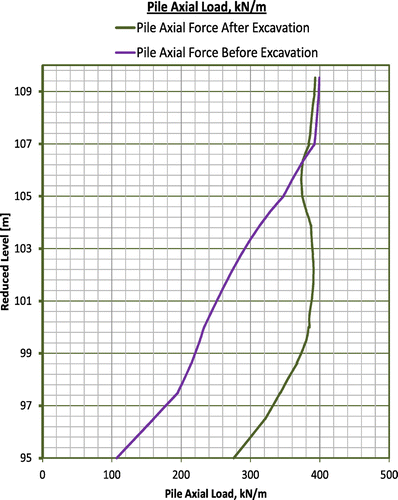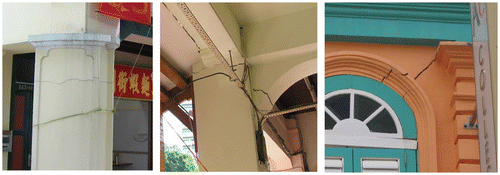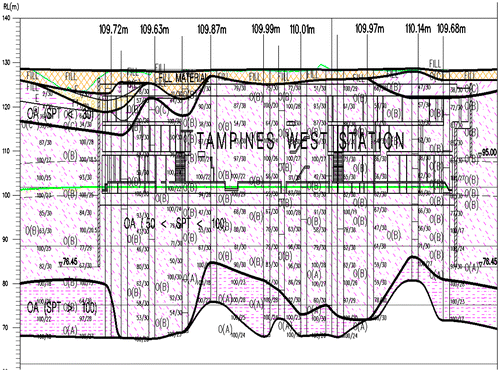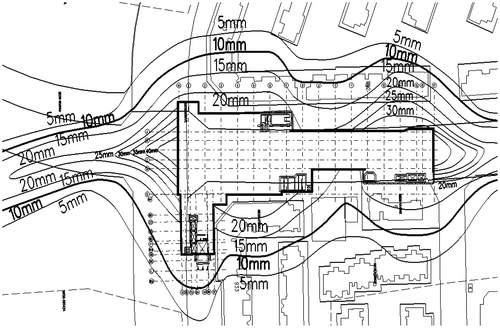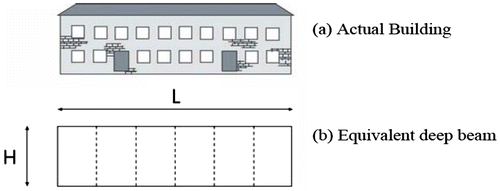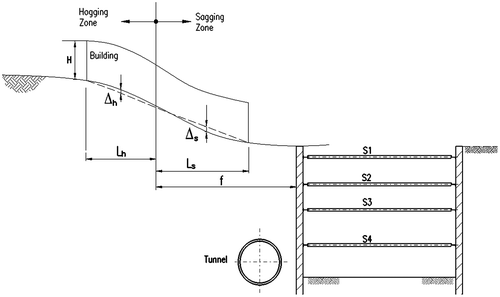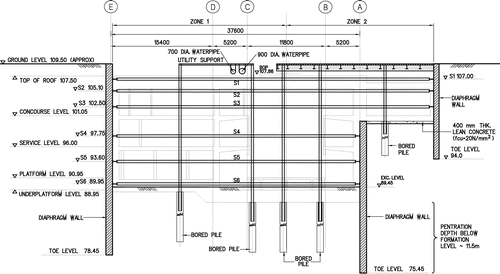Figures & data
Table 1. Summary table of soil parameters
Table 2. Relationship between category of damage and limiting tensile strain
Figure 9. Finite element meshes showing the pile foundation arrangement adjacent to a deep excavation (encircled closest pile considered in this study).
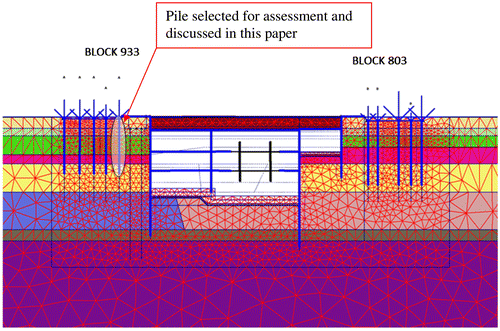
Figure 10. Vertical soil displacements due to the complete cycle of stage excavation and construction of the station structure.
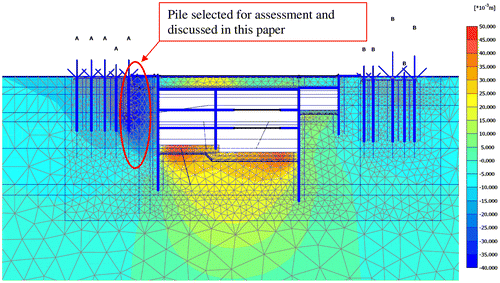
Figure 11. Horizontal soil displacements due to the complete cycle of stage excavation and construction of the station structure.

Figure 12. Effective normal stress distribution on the pile closest to the excavation before and after excavation.
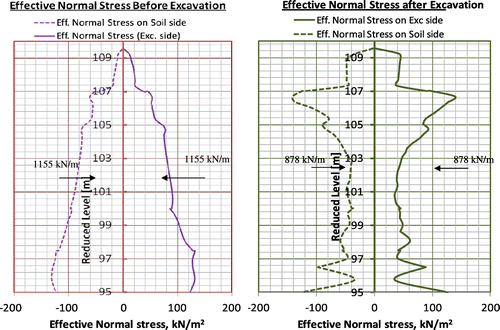
Figure 13. Comparison of development of skin friction on the pile closest to the excavation before and after excavation.
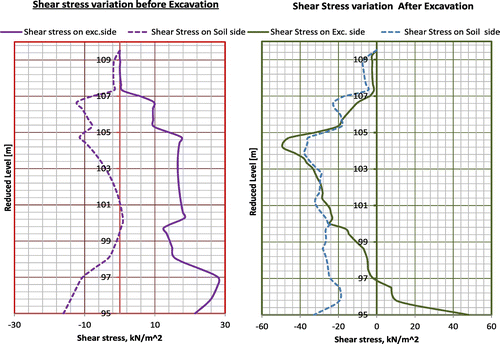
Figure 14. Variation of pile axial force with depth at the pile closest to the retaining wall before and after excavation.
